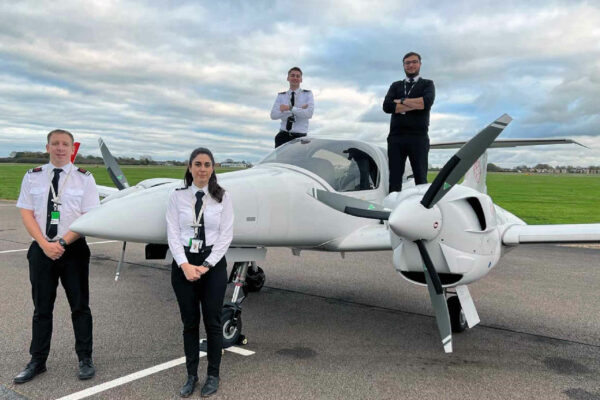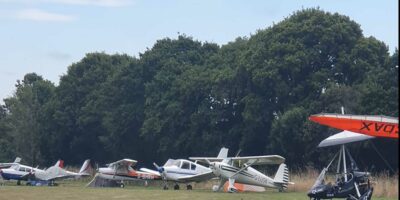With the end of 2022 fast approaching, a series of CAA Skywise notifications reminds us that a few loose ends relating to Brexit are finally being tied off. For most GA pilots in the UK, there are no major changes from those that happened at the end of the transition period on 31 December 2020.
Part-FCL licences that were issued by the UK while still in the EASA system remain valid for use in UK registered aircraft – I have heard anecdotally of some people being unsure on this point, but to date no plans have been announced for a reissuing process to reflect the UK leaving the EU.
The situation for airworthiness and maintenance procedures is more complex – the CAA is putting on a webinar on 14 December to explain some of the detail, such as Form 1 procedures.
EASA licence holders
There are a few points to note for those holding EASA licences, but who may wish to fly UK registered aircraft. After 31 December 2022, holders of licences issued by EASA member states must hold a UK licence or validation to fly UK registered Part 21 aircraft. Many of those who hold licences issued by EASA states, such as Ireland, will have already made use of the CAA process to obtain an equivalent UK licence.
Note that the end of 2022 also sees the end of obtaining a UK licence as solely a paperwork exercise – from 2023 onwards EASA licence holders wanting to obtain a UK licence will need to follow the conversion or validation process, including the relevant exams and skills test.
A small number of UK-based pilots may not be aware that even if they are flying a non-UK registered aircraft, if they (or the operator of the aircraft) are resident in the UK and the aircraft is a Part 21 type, it is a requirement to hold an equivalent UK Part-FCL licence that is valid for the aircraft being flown. The applicable CAA Skywise message worded the requirement as follows:
Pilots wanting to fly non-G registered aircraft resident within the UK, need to be aware that Article 2 of UK Regulation (EU) 2018/1139, requires the pilot to hold a UK licence, if the aircraft would be certified to Part 21 if on the UK register.
The above is the upshot of transposing a similar European requirement into UK law. The original intention of the requirement was that ‘third country’ licence holders (i.e. licences issued by states not in EASA) living in the EU also had to hold an equivalent EASA licence.
But the effect of taking that requirement into UK law is such that all licences issued outside of the UK are now ‘third country’.
Recap on regulations
The split legal framework between national and EASA always brought an additional amount of complexity to the regulatory picture. While this is not something we have to think about too much while flying, it does crop up when trying to understand points of detail in licensing and airworthiness regulations.
It may be helpful to recap on the status quo:
For Part 21 aircraft (i.e. what we used to call EASA aircraft) and Part-FCL licences, the main regulations remain those as per the retained EU law. GA pilots are mainly concerned with Part-FCL (flight crew licensing), Part-NCO (operations) and if you own an aircraft, probably Part-ML (maintenance). All three sit within parent regulations – Part-FCL in the ‘Aircrew Regulation’ (1178/2011), Part-NCO in Air Operations (965/2012) and Part-ML is part of the Continuing Airworthiness Regulation (1321/2014). The numbers associated with the regulations are those originally assigned in the European legislative system.
For non-Part 21 aircraft and national licences (i.e. those not issued under Part-FCL), the Air Navigation Order (ANO) 2016 is the main regulation. There are some high-level provisions in the ANO that apply to all UK registered aircraft or all aircraft in UK airspace, but these are not normally relevant to the detail of licensing or operations.
The ANO is essentially the old legal structure made under the Civil Aviation Act 1982, a lot of which was carved out when European aviation regulation came into force, since directly applicable EU law and domestic law cannot conflict.
I think it is now well understood what ‘Part 21 aircraft’ means in practice, but for those more recent to aviation the meaning may not be obvious. Most modern factory-built aircraft (other than microlights and gyroplanes) such as PA28s or C172s are Part 21, and therefore are operated under the former European ruleset.
Non-Part 21 aircraft include vintage and ex-military, amateur builds, microlights (including factory-built) and gyroplanes. It is sometimes stated that Part 21 aircraft hold a Certificate of Airworthiness, whereas non-Part 21 are ‘permit aircraft’.
While this has some truth as a generalisation, it is not necessarily the case. There are some Part 21 aircraft on permits to fly and there are some types old enough to be non-Part 21 that still are maintained on an ICAO Certificate of Airworthiness, issued under the ANO.
The Rules of the Air is one area in which the retained EU law, i.e. Part-SERA – the ‘Standardised European Rules of the Air’, applies equally to Part 21 and non-Part 21 aircraft.
In parallel to Part-SERA is also the UK Rules of the Air Regulations 2015, which include a small number of UK specific rules that were retained when SERA entered force in 2015. SERA also contains various points of national discretion, the details of which are published in the CAA Official Record Series 4 (ORS4). Over time the UK version of SERA may be amended to absorb those areas into the regulation itself.
The lack of a single Rules of the Air Regulation is frustrating for those looking at points of detail, but the Skyway Code attempts to draw the key requirements together. Although, it would be ideal if a single legislative basis could be established in this area.
There is currently a bill going through Parliament, the Retained EU Law (Revocation and Reform) Bill that may lead to a replacement of the retained EU law structure, but I suspect it will still be some time before this happens. The retained ‘Basic Regulation’, which was essentially the master EU legislation for most aviation regulations, has the same status as UK primary legislation, so to amend or repeal it requires parliamentary time, something that is a bit thin on the ground at the moment.
Finding regulations
The CAA has begun the process of consolidating some of the retained EU law into more accessible packages – an early example of this was the Sailplane regulation, which was published earlier in the year. The existing consolidations are quite hard to navigate, and I do not find them particularly intuitive to use, but for the time being they are the main reference point and can be found on the CAA’s UK regulations webpage under Aviation Safety > Basic Regulation, the Implementing Rules and UK CAA AMC GM CS.
* Insert own word rhyming with ‘thud’







